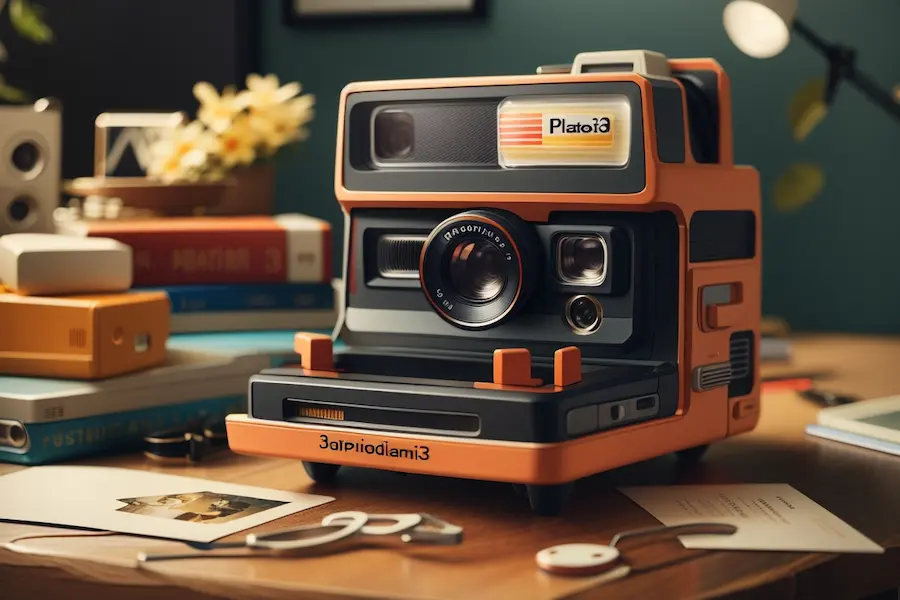1. The Nostalgic Power of Polaroid
Ah, the Polaroid! For many of us, it evokes memories of instant snapshots, captured moments in time, and the sheer joy of watching an image develop right before our eyes. There’s just something special about holding that tangible photograph, fresh from the camera.
In today’s digital age, it’s easy to forget the charm and simplicity that a Polaroid brought to our lives. With the world at our fingertips, sometimes it’s nice to take a step back and cherish the analog memories.
2. Marrying Past with Present: The 3D Model
Today, the magic of Polaroid isn’t just limited to memories. Enter the world of 3D modeling, where nostalgia meets modern design. By modeling a Polaroid picture in 3D, artists and designers are breathing new life into an old classic.
The 3D model captures the essence and feel of the real thing but adds depth and dimension, making it perfect for digital spaces and modern art installations.
3. Why a 3D Polaroid Model?
But why would anyone want a 3D model of a Polaroid picture? Well, there are several compelling reasons. For one, it’s a unique way of merging two different eras of technology. Plus, it acts as a bridge between tangible and digital memories.
Moreover, it’s versatile! From augmented reality apps to video game design, the 3D Polaroid picture can make a nostalgic splash anywhere it appears.
4. The Design Process: An Overview
Creating a Polaroid picture 3D model isn’t a walk in the park. It requires attention to detail, starting from the iconic white border to the texture of the photograph. Every aspect must be considered.
3D artists begin by sketching a basic outline, followed by adding layers to give it depth. Then, the magic happens with the addition of textures, shadows, and lighting, giving the model a hyper-realistic feel.
5. Tools of the Trade
Modern 3D modeling software like Blender, Maya, or ZBrush can be used to craft the perfect Polaroid picture. These tools allow for intricate detailing, ensuring that the model captures the essence of the real thing.
Once the model is complete, rendering tools give it a lifelike sheen, making it indistinguishable from an actual Polaroid.
6. Challenges in Modeling
While it sounds fascinating, creating a 3D model of something as iconic as a Polaroid picture does come with its challenges. The pressure to stay true to its look and feel, the play of light and shadow, and ensuring it resonates with viewers can be daunting tasks.
Yet, with creativity and patience, these challenges can be overcome, resulting in a piece of art that stands out.
7. The Final Product: Applications and Uses
After all the hard work, the final product is versatile. Designers use the 3D Polaroid model in virtual art galleries, movies, and even virtual reality spaces. Its applications are limited only by imagination.
It’s not just about aesthetics, though. This model also serves as a bridge, connecting viewers to an era gone by while staying rooted in the present.
8. The Future of Nostalgia
With the advent of technology, more and more iconic items from our past are getting a digital makeover. The Polaroid picture 3D model is just the beginning.
Soon, we might see other beloved items from yesteryears making a comeback in the 3D digital realm, making nostalgia an ever-evolving entity.
9. In Conclusion: Embracing the Best of Both Worlds
The Polaroid picture 3D model reminds us that even as we forge ahead with technological advances, there’s always a place for the charms of the past. By marrying memories with modern design, we’re ensuring that the past is never truly forgotten.
In the end, it’s all about striking a balance and appreciating the journey that technology and art take us on, from the tangible to the digital and everything in between.
Explore the rest of our website Tech Glints, intriguing articles await you! Interested in contributing? Simply click the contact button at the top right. Thank you!
